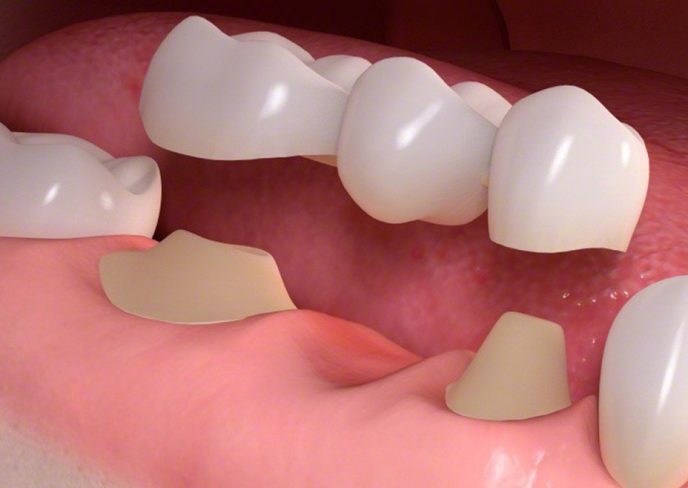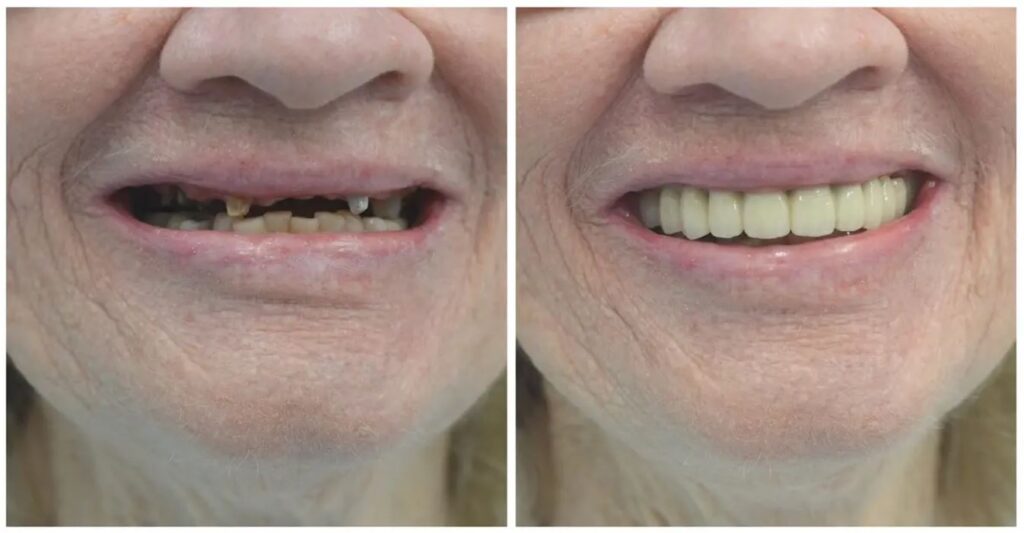A dental bridge is a prosthetic device used to replace one or more missing teeth, literally “bridging” the gap created by missing teeth.
Dental bridges can be made from various materials, including porcelain, alloys, gold, or a combination of these materials, to ensure strength and a natural appearance, and are cemented or bonded into place, which means they are not typically removable by the patient.
Bridges are created to match the color, height, texture, and overall appearance of your teeth. Most bridges bridges will last for life, eliminating the need to replace them unless they fall out or become loose. You can prolong the durability of your bridges by practicing good oral hygiene and visiting your dentist for regular check-ups and cleanings. Our doctors take pride in the result we are able to achieve, so if you need a bridge, call us today and see that we are the best at what we do!
Dental bridges consist of Abutment(s) Teeth, Pontics (false teeth) and Crowns and offer the following benefits:
- Replace missing teeth
- Restore Function
- Maintain Facial Shape
- Prevent Tooth Shifting
- Improve Aesthetics
- Distribute Bite Forces


Dental bridges are a proven and effective solution for replacing missing teeth, improving appearance, function and oral health.
Pros:
- Offers high stability and a natural look and feel
- Does not impact adjacent natural teeth
- Long-lasting solution
Cons:
- Requires surgical implantation of implants
- Higher cost and longer treatment time
The Dental bridge process involves:
- Evaluation & Preparation
- Impressions
- Fabrication
- Placement
Do I Need Root Canals Before a Bridge?
Not always. If the supporting teeth are healthy, a bridge can be placed without root canals.
If a tooth is badly decayed, broken, or weak, we may recommend a root canal and strong build-up first to make sure your bridge lasts.
How long does a dental bridge last?
With proper care, most bridges last 10–15 years or longer.
Will my bridge look natural?
Yes. We match the color, shape, and size to your natural teeth so it blends seamlessly.
How do I take care of my bridge?
Brush and floss daily, and use a floss threader or water flosser to clean under the bridge. Regular dental checkups help maintain it.
Is a bridge better than an implant?
Both can be great options. A bridge is faster and doesn’t require surgery, while an implant is a standalone solution. Your dentist will recommend what’s best for your situation.
Does getting a bridge hurt?
No. The procedure is done under local anesthesia, so you’ll be comfortable the whole time.
What’s the process of getting a dental bridge?
Consultation & Exam – We check the health of the supporting teeth and discuss your options.
Tooth Preparation – The supporting teeth are shaped so the bridge can fit securely. If needed, a root canal and build-up are done first.
Impressions – We take a mold or digital scan to create your custom bridge.
Temporary Bridge – A temporary bridge protects your teeth while your permanent one is made.
Fitting & Cementation – We try in the permanent bridge, make adjustments, and cement it in place
What materials are used for a dental bridge?
We mostly use:
Zirconia – The strongest option, great for durability.
Porcelain-layered zirconia – Strong on the inside with a natural, beautiful outer layer.
Porcelain – Offers the most natural look but is less strong than zirconia.
Your dentist will recommend the best material for you based on strength, appearance, and where the bridge will be placed.
Who needs a dental bridge?
Dental bridges are suitable for anyone missing one or more teeth who wishes to restore their smile and dental functionality. Ideal candidates for a dental bridge:
- Have healthy teeth on either side of the missing tooth gap
- Maintain good oral hygiene
- Do not suffer from severe gum disease or decay
A dental bridge may not be ideal if there are no adjacent healthy teeth or if a stronger, more permanent solution (such as an implant) better suits the patient’s needs.


